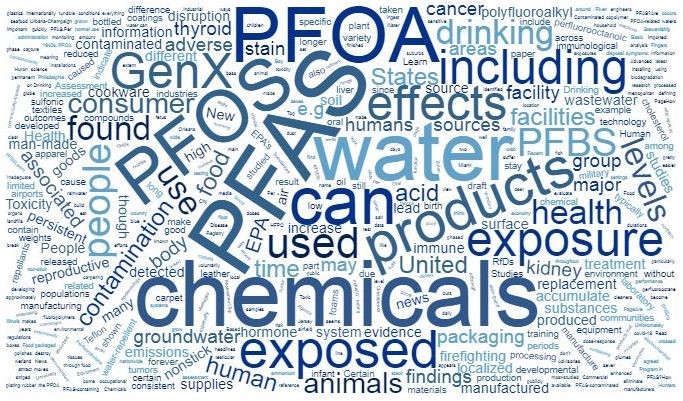 In February of this year, the EPA added PFAS (Per- and Polyfluoroalkyl Substances) to its list of Fifth Unregulated Contaminant Monitoring Rule (UCMR 5) to collect new data on PFAS in drinking water and the agency is reissuing final regulatory determinations for perfluorooctanoic acid (PFOA) and perfluorooctanesulfonic acid (PFOS) under the Safe Drinking Water Act (SDWA). So, what does this mean for communities contemplating their exposure?
In February of this year, the EPA added PFAS (Per- and Polyfluoroalkyl Substances) to its list of Fifth Unregulated Contaminant Monitoring Rule (UCMR 5) to collect new data on PFAS in drinking water and the agency is reissuing final regulatory determinations for perfluorooctanoic acid (PFOA) and perfluorooctanesulfonic acid (PFOS) under the Safe Drinking Water Act (SDWA). So, what does this mean for communities contemplating their exposure?
What is all the fuss about PFAS and “forever chemicals”? Some of the headlines these days include, “Chinese Cities Discover High Levels of Persistent Chemicals in Water Supplies” or “PFAS Exposure Found to Increase Risk of Severe COVID-19 Symptoms.” Unfortunately, the science is pretty clear that this group of human-made chemicals are linked to an array of health problems including reduced immune system function, learning delays in children, and kidney or testicular cancer.It seems the more we test for this group of chemicals the more we find them. PFAS chemicals consist of approximately 4,700 compounds present in everything from our food containers and Teflon coated cooking ware. They have been found in our landfills, stack emissions, surface water, bottled water, and public water supplies, including major metropolitan areas including New Orleans, Miami, Philadelphia and the northern New Jersey suburbs of New York City. PFAS has also been detected in seafood such as striped bass, blue crab and oyster from the Chesapeake Bay as well as in deer from certain wetland areas in Michigan. Hunters were recently warned not to eat venison that was taken from these areas due to high levels of PFAS contamination. Further, a 2020 investigation by Consumer Reports tested 47 bottled waters and detected PFAS in most of the products. The Agency for Toxic Substances and Disease Registry (ATSDR) states that most people in the United States have been exposed to PFAS and have PFAS in their blood. Have we got your attention?
There is some good news though coming out on remediation or cleanup measures for sources of PFAS compounds! Advanced water profiling equipment has come on line that makes defining the extent of contamination easier by assessing groundwater conditions without installing permanent groundwater monitoring wells. More good news is that engineers from the University of Illinois at Urbana-Champaign have demonstrated how to attract, capture and destroy PFAS in water using tunable copolymer electrodes and electrochemical reactions. Further, recent analysis has shown that source plumes of PFAS contaminants have been reduced in the Huron River after two years of enhanced treatment at a local wastewater treatment plant. Addressing PFAS contamination is an emerging area both on a scientific front as well on a regulatory front. EPA’s PFAS Action Plan is a useful resource to consult.


